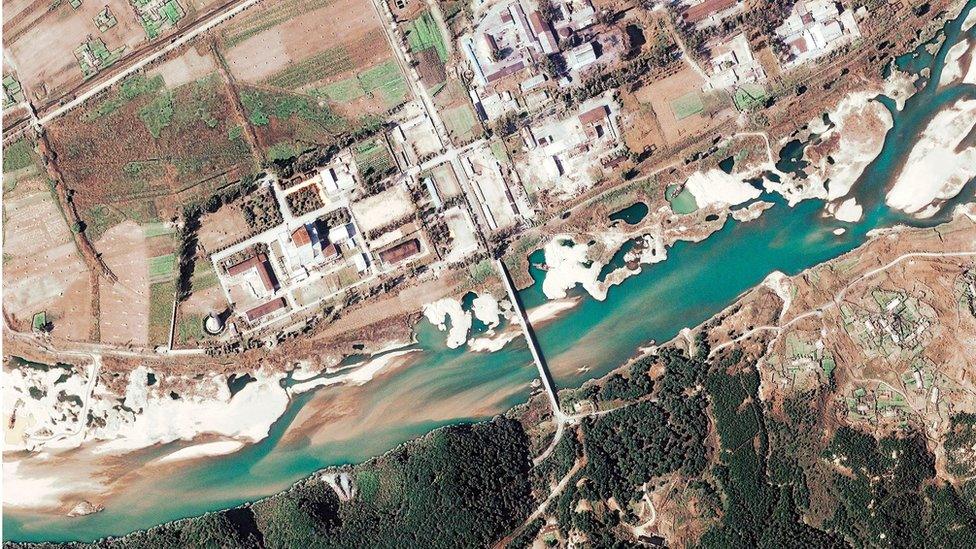North Korea missile: US confirms long-range test
- Published
"One expert says the missile could reach Alaska"
The US has confirmed that North Korea tested a long-range missile which some experts believe could reach Alaska.
Secretary of State Rex Tillerson called it, external a "new escalation of the threat" and warned that Washington "will never accept a nuclear-armed North Korea".
Pyongyang claimed on Tuesday to have successfully tested an intercontinental ballistic missile (ICBM).
However, most experts believe that the North does not yet have long-range nuclear weapon capabilities.
Missiles fired during US-South Korea drills serve as warning to North Korea
In response the US and South Korea conducted a joint military exercise on Wednesday.
A statement by the two countries' militaries warned that "self-restraint, which is a choice, is all that separates armistice and war" and that their drills showed "we are able to change our choice".
The two Koreas are technically still at war as the 1950-1953 Korean War ended in an armistice.
Mr Tillerson said "global action is required to stop a global threat" and warned that any nation that provided economic or military benefits to the North, or failed to fully implement UN Security Council resolution, was "aiding and abetting a dangerous regime".

The US and South Korea fired missiles into the Sea of Japan on Wednesday in response
The US has asked for an urgent meeting of the UN Security Council to discuss the issue. A closed-door session of the 15-member body is expected later on Wednesday.

What is an ICBM?

A long-range missile usually designed to carry a nuclear warhead
The minimum range is 5,500km (3,400 miles), although most fly about 10,000km or more
Pyongyang has previously displayed two types of ICBMs: the KN-08, with a range of 11,500km, and the KN-14, with a range of 10,000km, but before 4 July had not claimed to have flight tested an ICBM. It is not clear what differentiates the Hwasong-14

What has North Korea said?
State news agency KCNA quoted leader Kim Jong-un as saying the test was a "gift" to the Americans on their independence day.
The report warned of the possibility of more tests, saying he ordered officials to "frequently send big and small 'gift packages' to the Yankees".
North Korean state TV announces "successful" missile test
Pyongyang said earlier the Hwasong-14 intercontinental ballistic missile (ICBM) had reached an altitude of 2,802km (1,731 miles) and flew 933km for 39 minutes before hitting a target in the sea.
North Korea, it said, was now "a full-fledged nuclear power that has been possessed of the most powerful inter-continental ballistic rocket capable of hitting any part of the world".
The launch, the latest in a series of tests, was in defiance of a ban by the UN Security Council.

Does North Korea really have a long-range weapon now?
Some experts believe that Tuesday's test proves that it has a missile that could travel across the globe and reach Alaska.
Physicist David Wright said it could reach a maximum range of about 6,700km, external on a standard trajectory, while South Korea's defence ministry on Wednesday put the range between 7,000 and 8,000km.
But whether that missile could deliver a warhead is still a question.
Pyongyang claimed the rocket carried a "heavy warhead" and that it "accurately hit the targeted waters without any structural breakdown".
But South Korea said there was no evidence proving the missile could withstand high temperatures and successfully re-enter the atmosphere, reported Yonhap news agency., external

Experts believe Pyongyang does not yet have the capability to miniaturise a nuclear warhead, fit it onto a long-range missile, and ensure it is protected until delivery to the target.
They say many of North Korea's missiles cannot accurately hit targets.
But others believe that, external at the rate it is going, Pyongyang may overcome these challenges and develop a nuclear weapon that could strike the US within five to 10 years.

What now for Washington? - Dr John Nilsson-Wright, Chatham House
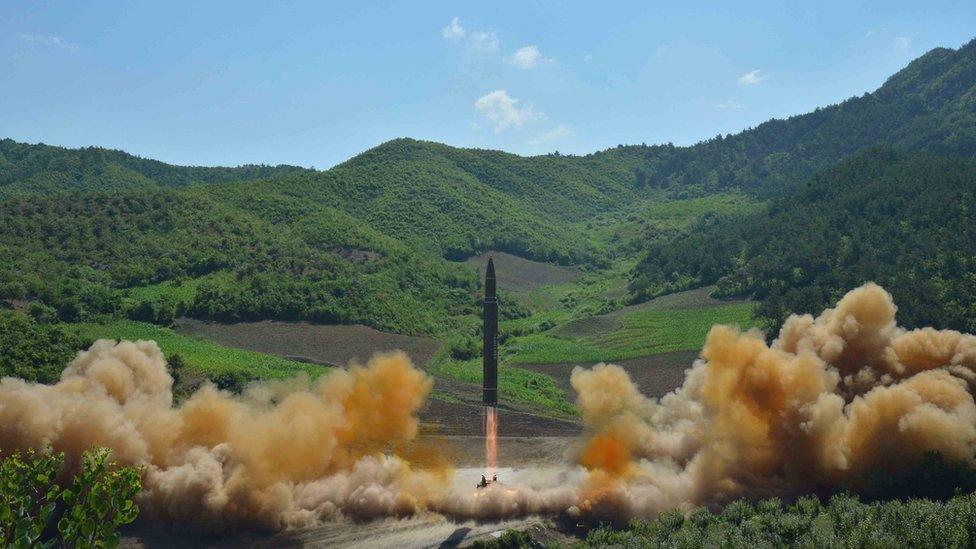
North Korean media released this image of Tuesday's missile launch
By bringing Alaska within range, the new missile test is an unambiguous game-changer in both symbolical and practical terms.
US territory (albeit separate from the contiguous continental US) is now finally within Pyongyang's cross-hairs.
For the first time a US president has to accept that the North poses a "real and present" danger not merely to north-east Asia and America's key allies - but to the US proper.
President Trump's weakness lies in having overplayed his hand too publicly and too loudly.

How is the rest of the world reacting?
The South Korean parliament adopted a resolution on Wednesday condemning the missile launch, reported Yonhap.
The resolution said "the North Korean authorities themselves will have to bear the price for their provocative behaviour, and we gravely warn that it could result in the Kim Jong-un regime facing its collapse and extinction".
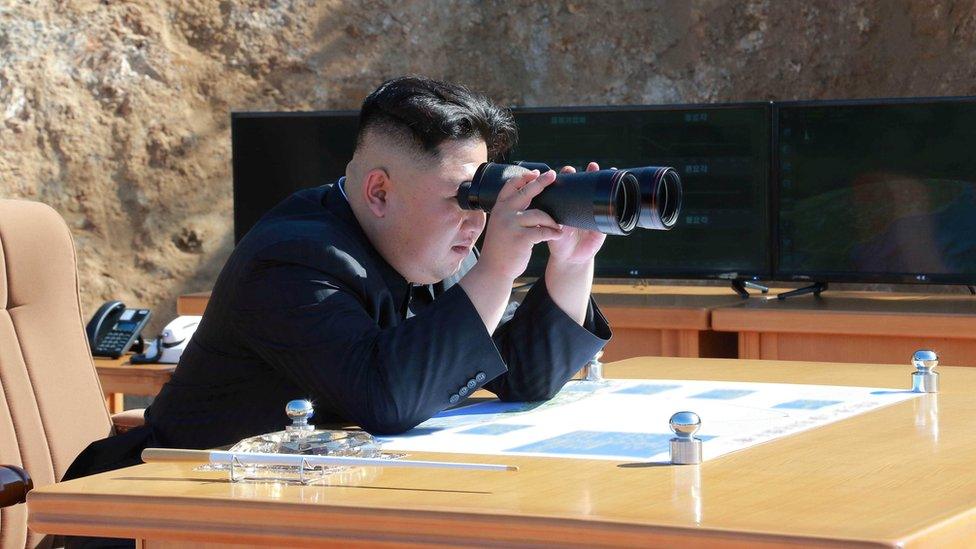
North Korean state TV said the launch was overseen by leader Kim Jong-un
Japan on Tuesday said "repeated provocations like this are absolutely unacceptable" and lodged a protest.
Meanwhile China - which is Pyongyang's main economic ally - and Russia have called on North Korea to suspend its ballistic missile programme in exchange for a halt on the large-scale military exercises by the US and South Korea.
Chinese President Xi Jinping and Russian counterpart Vladimir Putin, who met in Moscow on Tuesday, said "the opposing sides should start negotiations".
- Published20 April 2017
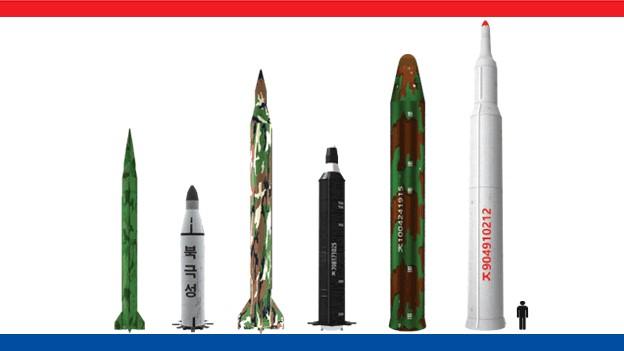
- Published4 July 2017
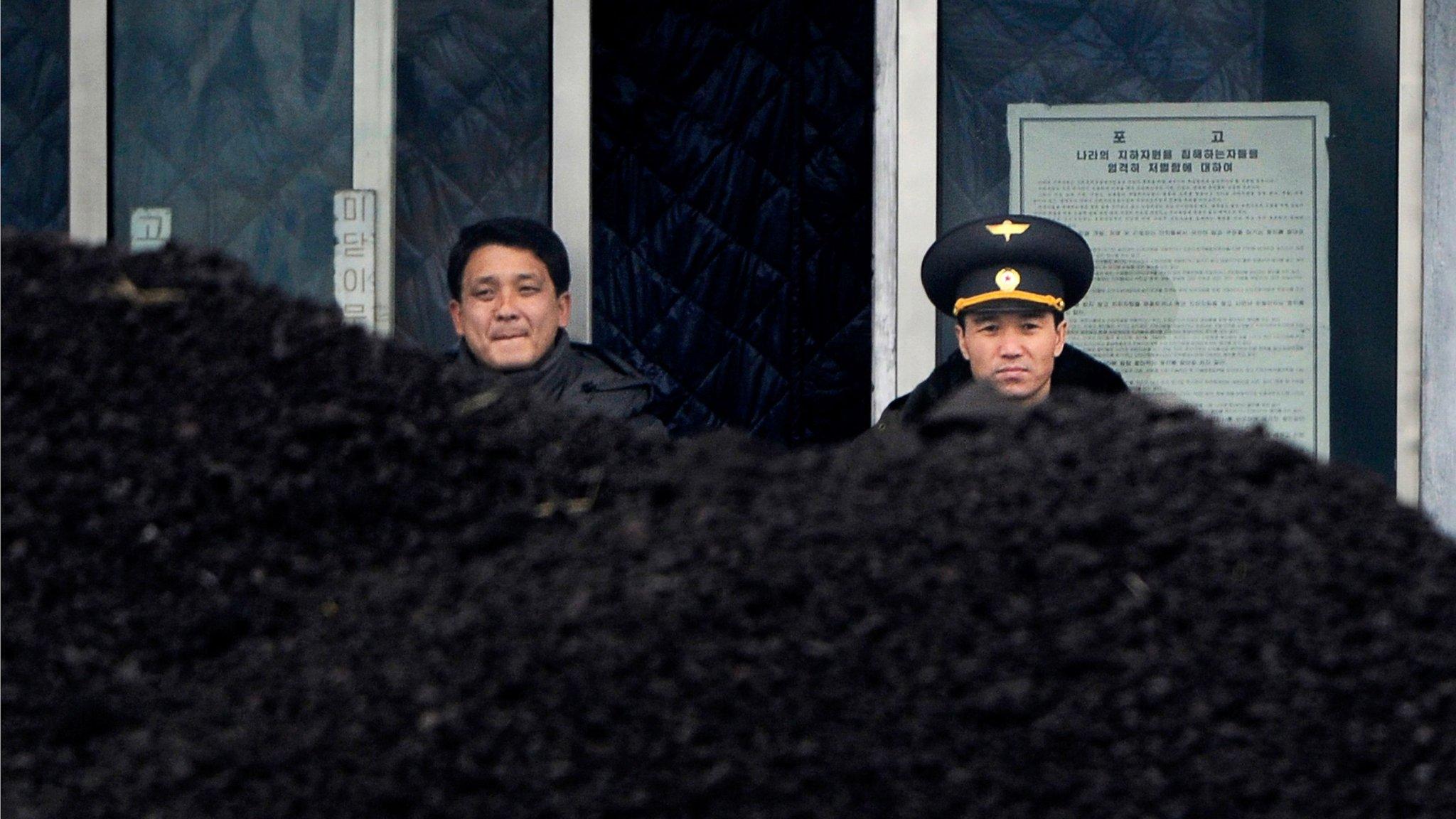
- Published10 August 2017
- Published10 August 2017
